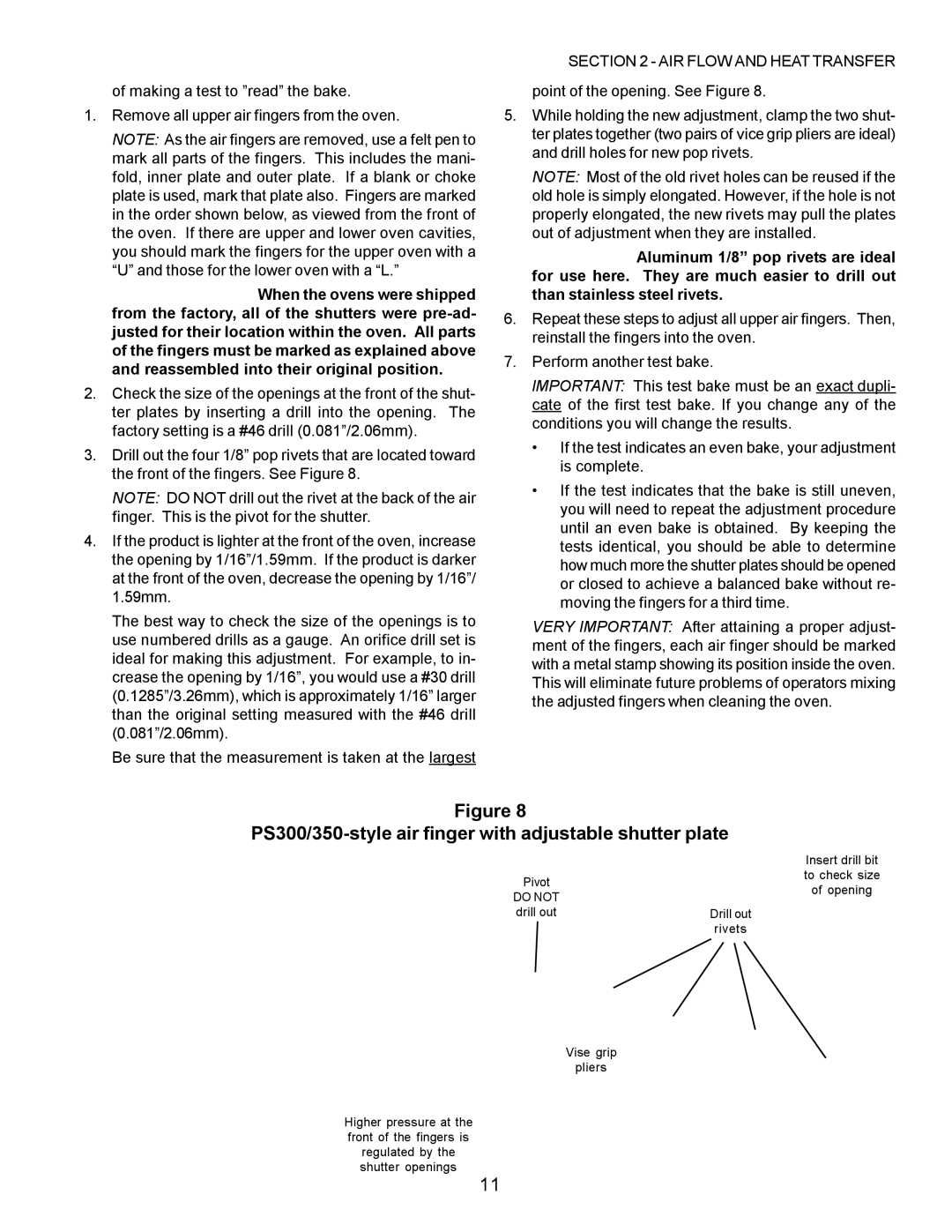PS224 PS310, PS220, PS555, PS200, PS360 specifications
The Middleby Marshall PS555 is a standout commercial pizza oven renowned for its performance, efficiency, and advanced technologies. Designed with the modern pizzeria in mind, the PS555 delivers exceptional cooking results while maximizing energy efficiency and throughput.One of the key features of the PS555 is its innovative cooking technology, which incorporates both convection and radiant heat. This unique combination ensures that pizzas are cooked evenly and quickly, achieving a perfectly crispy crust and evenly melted cheese every time. The oven’s high-speed air impingement system accelerates cooking times, allowing pizzerias to serve more customers in less time without compromising quality.
The PS555 is designed with a spacious cooking chamber that can accommodate multiple pizzas simultaneously. With its ability to fit pizzas up to 18 inches in diameter, the oven is ideal for establishments with high demand. Additionally, the adjustable conveyor speed allows operators to customize the cooking time based on their specific menu items, enhancing versatility and productivity.
Energy efficiency is a hallmark of the Middleby Marshall PS555. The oven utilizes advanced insulation materials to minimize heat loss, ensuring that it operates at optimal temperatures while consuming less energy. This efficiency not only reduces operating costs but also contributes to a more sustainable kitchen environment.
User-friendly controls make it simple for operators to manage the cooking process. The PS555 features digital controls with programmable settings, enabling quick adjustments to temperature and cooking time. This ensures consistent quality across different shifts and helps maintain product standards while simplifying staff training.
Durability is another defining characteristic of the PS555. Built with high-quality materials, the oven is designed for heavy use in busy commercial kitchens. Its stainless steel construction ensures resistance to wear and tear, making it a worthwhile investment for any pizzeria.
In summary, the Middleby Marshall PS555 pizza oven is a high-performance piece of equipment that combines advanced cooking technologies, efficiency, and durability. Its ability to deliver consistently excellent results while streamlining operations makes it an essential asset for any pizza business aiming to enhance its productivity and customer satisfaction.

